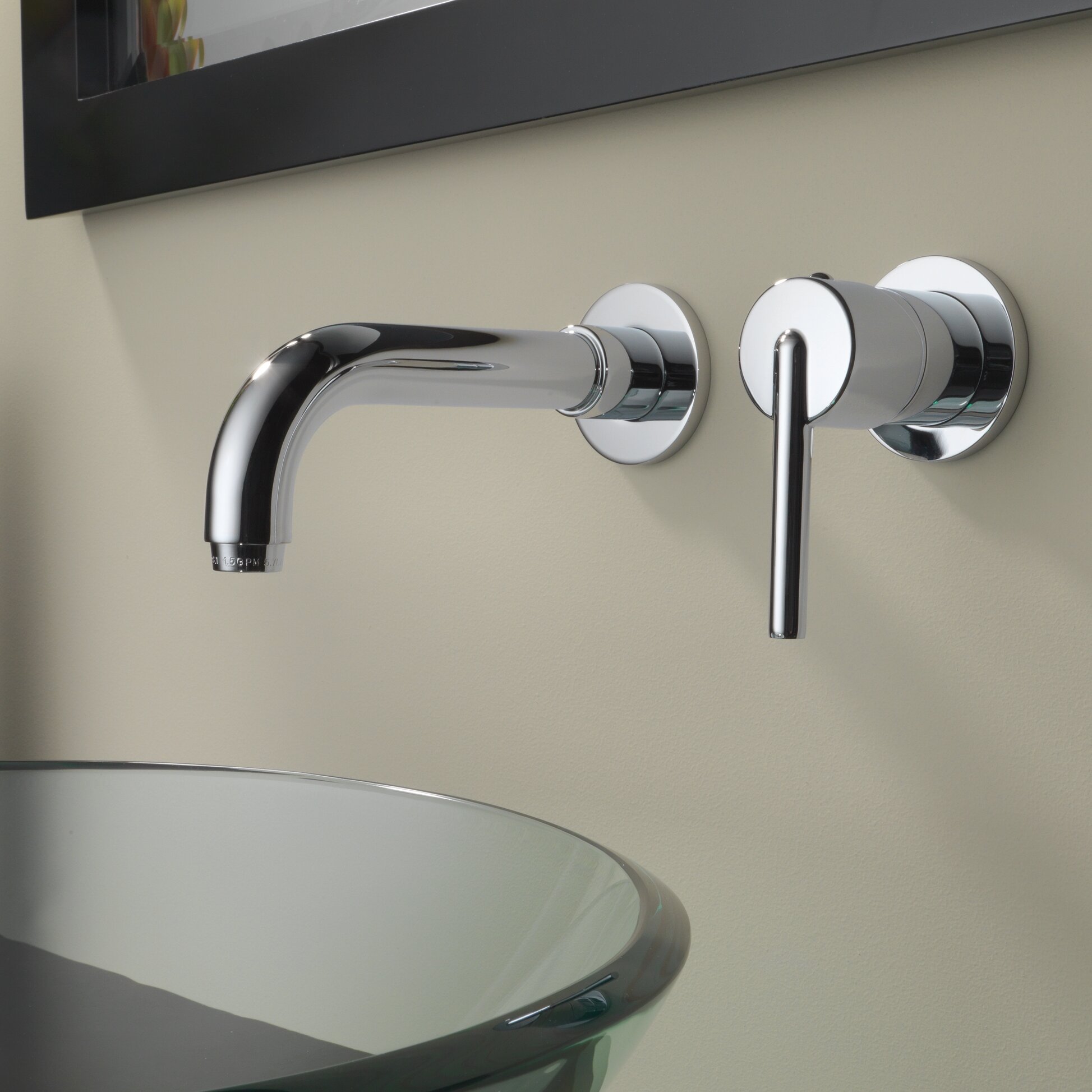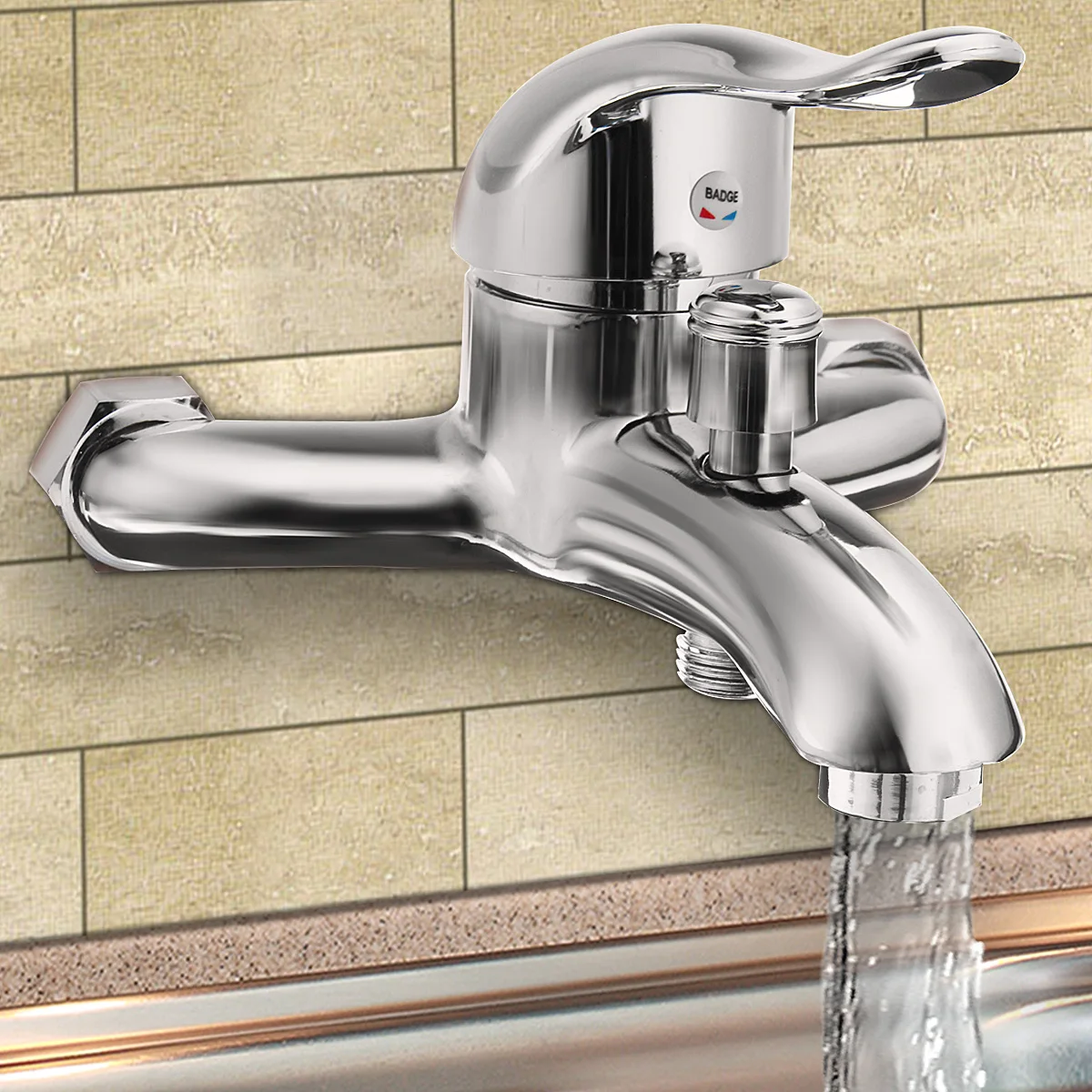Types of Bathroom Sink Wall Faucets

Bathroom sink wall faucets come in a wide variety of styles, designs, and functionalities to suit different needs and preferences. Here’s a table summarizing the main types:
| Type | Style | Design | Functionality |
|---|---|---|---|
| Centerset | Traditional | Two handles mounted on a single base plate | Easy to install, affordable |
| Widespread | Contemporary | Three handles mounted separately | More customizable, allows for wider sinks |
| Wall-mounted | Modern | Faucet mounted directly to the wall | Sleek, space-saving, suitable for vessel sinks |
| Single-handle | Modern | One handle controls both water temperature and flow | Easy to use, compact |
| Touchless | Contemporary | Sensor-activated, no need to touch the handles | Hygienic, convenient, but more expensive |
When choosing a bathroom sink wall faucet, consider the following factors:
- Style: Match the faucet to the overall bathroom decor.
- Functionality: Determine the desired features, such as single-handle or touchless operation.
- Installation: Consider the ease of installation and the required tools.
- Durability: Choose a faucet made of high-quality materials that will withstand daily use.
- Price: Set a budget and explore options within that range.
Factors to Consider When Choosing a Bathroom Sink Wall Faucet

Selecting a bathroom sink wall faucet involves careful consideration of various factors that influence its functionality and aesthetic appeal. These factors include:
Flow Rate
The flow rate of a faucet measures the volume of water it dispenses per minute. A higher flow rate provides a more powerful stream, while a lower flow rate conserves water. Consider the intended use of the faucet and the desired water pressure when selecting the flow rate.
Finish, Bathroom sink wall faucet
The finish of the faucet refers to its surface coating. Popular finishes include chrome, brushed nickel, oil-rubbed bronze, and matte black. Choose a finish that complements the overall bathroom décor and is resistant to corrosion and tarnishing.
Handle Type
Faucet handles come in various styles, including lever, knob, and touchless. Lever handles offer ease of use and precise temperature control, while knob handles provide a more traditional look. Touchless faucets offer hands-free operation, promoting hygiene.
Spout Reach
The spout reach determines the distance the water stream extends from the faucet base. A longer spout reach provides more clearance for larger sinks or tasks like washing hair, while a shorter spout reach is suitable for smaller sinks.
Installation Requirements
Consider the plumbing configuration and available space when selecting a faucet. Some faucets require specific mounting holes or plumbing connections. Ensure the faucet you choose is compatible with your existing plumbing system.
Installation and Maintenance of Bathroom Sink Wall Faucets

Installing and maintaining a bathroom sink wall faucet is crucial to ensure its proper functioning and longevity. This guide provides step-by-step instructions for installation, common maintenance procedures, and safety precautions to consider.
Installation
Tools and Materials:
– Adjustable wrench
– Plumber’s tape
– Screwdriver
– Hacksaw or pipe cutter
– Basin wrench
– New faucet
Steps:
1. Turn off the water supply valves under the sink.
2. Disconnect the old faucet by unscrewing the supply lines and the mounting nuts.
3. Clean the mounting surface and apply plumber’s tape to the threads of the new faucet.
4. Insert the faucet into the mounting holes and tighten the mounting nuts.
5. Connect the supply lines to the faucet and tighten them securely.
6. Turn on the water supply and check for leaks.
Maintenance
Cleaning:
– Regularly clean the faucet with a mild detergent and a soft cloth.
– Use a soft brush to remove any mineral deposits or debris from the aerator.
Troubleshooting:
– If the faucet is leaking, check for loose connections or damaged parts.
– If the water flow is weak, clean the aerator or check for blockages in the supply lines.
Replacing Parts:
– Replace the aerator regularly to maintain water flow and prevent mineral buildup.
– If the faucet is leaking from the base, it may require replacing the O-rings or seals.
Safety Precautions
– Always turn off the water supply before performing any maintenance or repairs.
– Use caution when tightening connections to avoid overtightening.
– Ensure the faucet is securely mounted to prevent loosening or damage.
The bathroom sink wall faucet, a beacon of functionality, often stands as a solitary sentinel above the under-sink abyss. But beneath its gleaming exterior lies a realm of hidden potential. Delve into the depths of under bathroom sink organization ideas to transform this neglected space into a sanctuary of order.
With clever storage solutions and innovative compartments, you can tame the chaos and restore harmony to your bathroom’s heart. Yet, even amidst the newfound organization, the bathroom sink wall faucet remains a steadfast guide, a symbol of both utility and aesthetic grace.
Replacing your bathroom sink wall faucet can also help eliminate unpleasant odors. If your sink smells bad, it could be due to a buildup of bacteria or mold in the faucet or pipes. A new faucet will not only improve the aesthetics of your bathroom, but it can also help prevent future odor problems by ensuring that water flows properly and doesn’t stagnate.
For more information on why your bathroom sink smells bad, visit bathroom sink smells bad.